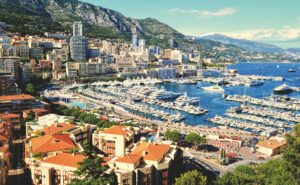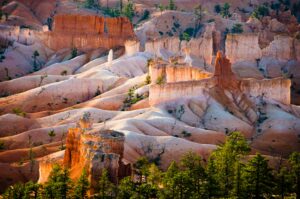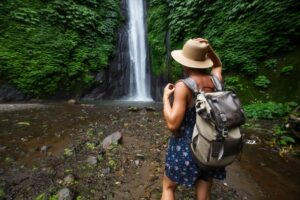Dreaming of glaciers, waterfalls, and endless adventure? If Iceland isn’t already on your bucket list, this itinerary will convince you to pack your bags! I recently explored this magical land, and trust me, it’s everything you imagine and more.
Let me guide you through an unforgettable Iceland Itinerary journey, sharing my personal experiences and all the tips to make your trip seamless and exciting.
Itinerary Snapshot
- Duration: 7 days
- Route: Reykjavík → Golden Circle → South Coast → Jökulsárlón Glacier Lagoon → Snæfellsnes Peninsula
- Estimated Budget: $2,000–$3,000 per person (flights, accommodation, meals, tours)
- Best Time to Visit: Late spring to early autumn (May–September) for lush landscapes or winter (November–March) for Northern Lights.
Essentials to Prepare Before You Go
Flights: Book your flights early to snag the best deals. I used Skyscanner and found a great round-trip deal for under $600. Flying into Keflavík International Airport is the most common route.
Travel Insurance: Iceland’s unpredictable weather makes travel insurance a must. World Nomads has comprehensive coverage.
Passes: Get the Reykjavík City Card for discounts on attractions and free public transport.
Local SIM: Grab a prepaid SIM card (Siminn or Vodafone) at the airport for data on the go. It’s a lifesaver when navigating remote areas.
Travel Credit Card: Use a card with no foreign transaction fees. Iceland is mostly cashless, so a good card will save you money on every swipe.
Day 1: Welcome to Reykjavík – Iceland’s Quirky Capital
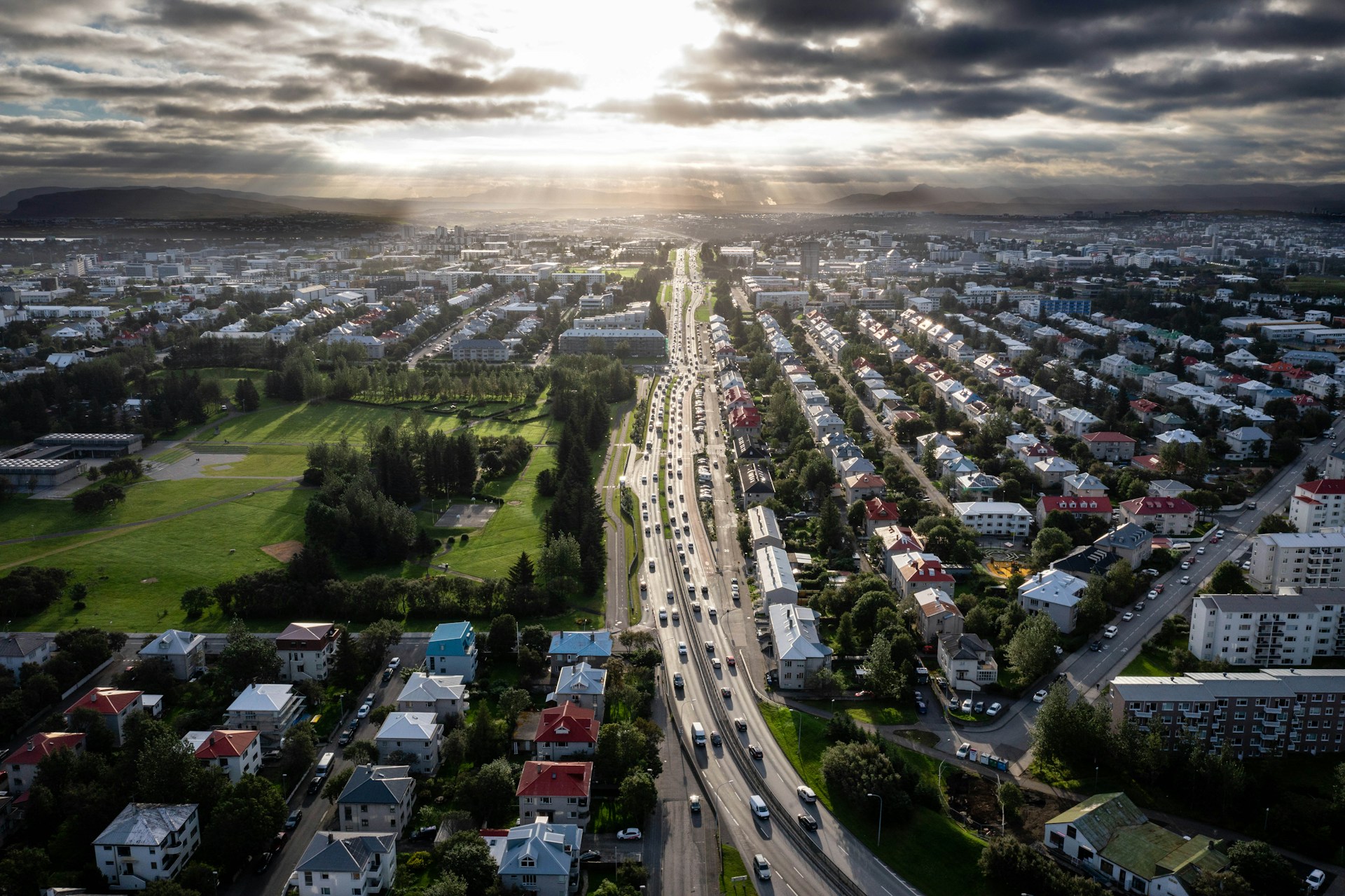
Morning: A Warm Welcome at Hallgrímskirkja
After landing in Reykjavík, I recommend grabbing a strong cup of Icelandic coffee from Kaffitár to wake you up. Start your morning at Hallgrímskirkja, the city’s iconic church with a view that’s worth the climb. Trust me, seeing the colorful rooftops and Mount Esja from above is the perfect introduction to Iceland.
Did You Know? Hallgrímskirkja was inspired by Iceland’s basalt columns, like those at Reynisfjara Beach.
Afternoon: A Stroll Through History
Head to Austurvöllur Square for a cozy lunch at Messinn, where the fish pan dishes are legendary. Then, wander through the streets of Reykjavík, stopping at The Settlement Exhibition, which showcases Viking ruins right beneath your feet!
Highlight: Don’t miss a photo-op at Harpa Concert Hall, whose shimmering glass panels mimic the aurora borealis.
Pro Tip: Book a walking tour to uncover hidden street art and quirky tales from locals.
Evening: A Dip in the Blue Lagoon
End your first day unwinding at the Blue Lagoon. Its milky blue waters are surreal, and the silica masks leave your skin glowing. Pre-book your slot—spots fill up fast!
Fun Fact: The Blue Lagoon isn’t natural; it’s a man-made geothermal spa created from a nearby power plant!
Day 2: The Golden Circle Adventure
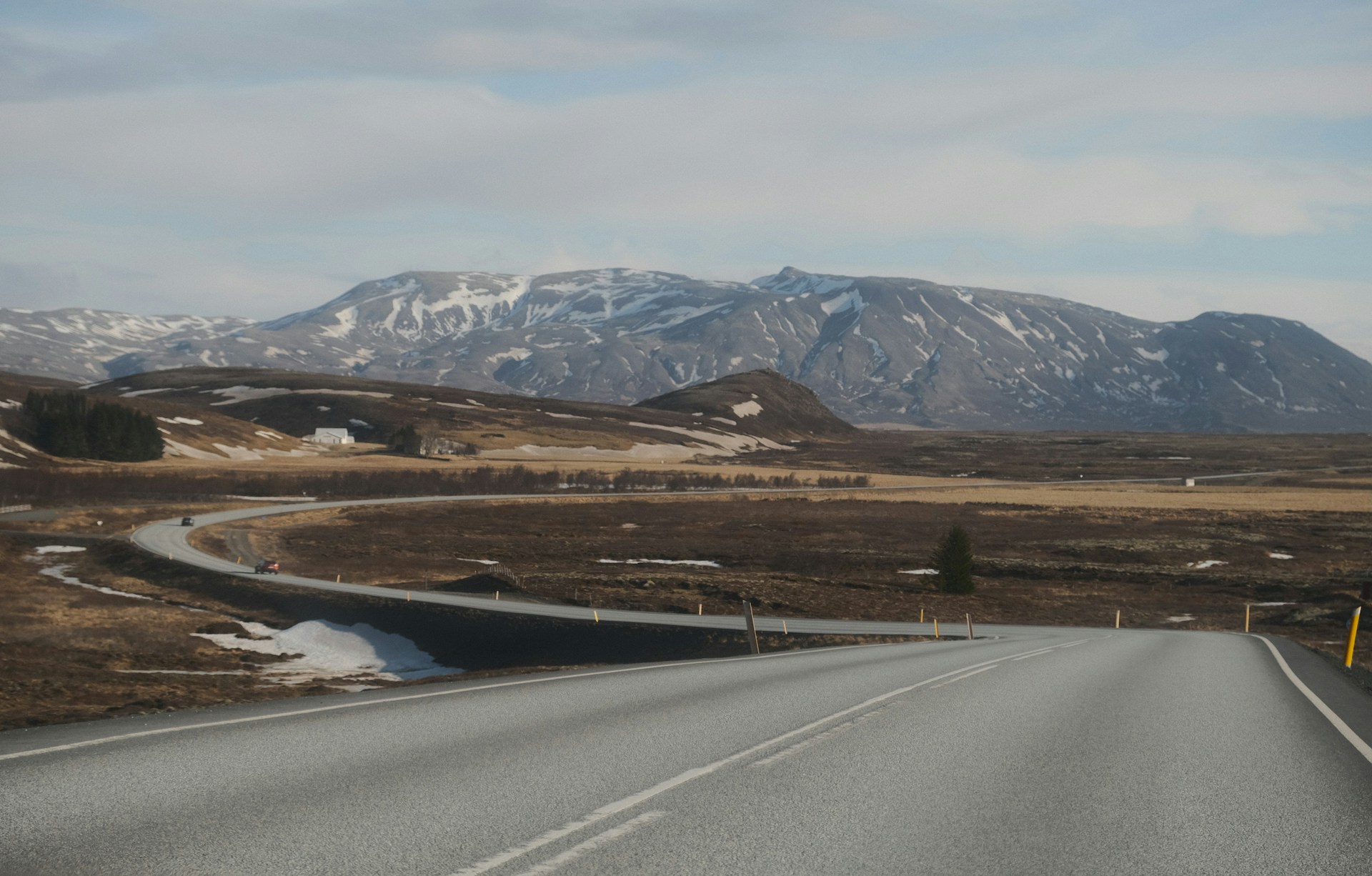
Morning: Thingvellir National Park – Where History Meets Nature
Kick off the day at thingvellir, a UNESCO World Heritage Site where you can literally walk between tectonic plates. The park is also the birthplace of Iceland’s parliament.
Afternoon: Strokkur Geyser & Gullfoss Waterfall
Witness the power of Strokkur, a geyser erupting every 5–10 minutes. Then, make your way to Gullfoss Waterfall, a breathtaking cascade that roars like thunder.
Bonus Tip: Wear waterproof gear—you’ll thank me later when you’re standing near Gullfoss!
Evening: Farm-to-Table Dinner
After a day of exploration, treat yourself to a farm-to-table dinner at Friðheimar, a charming tomato farm offering incredible soups and bread.
Day 3: South Coast Wonders – Waterfalls and Black Sand Beaches
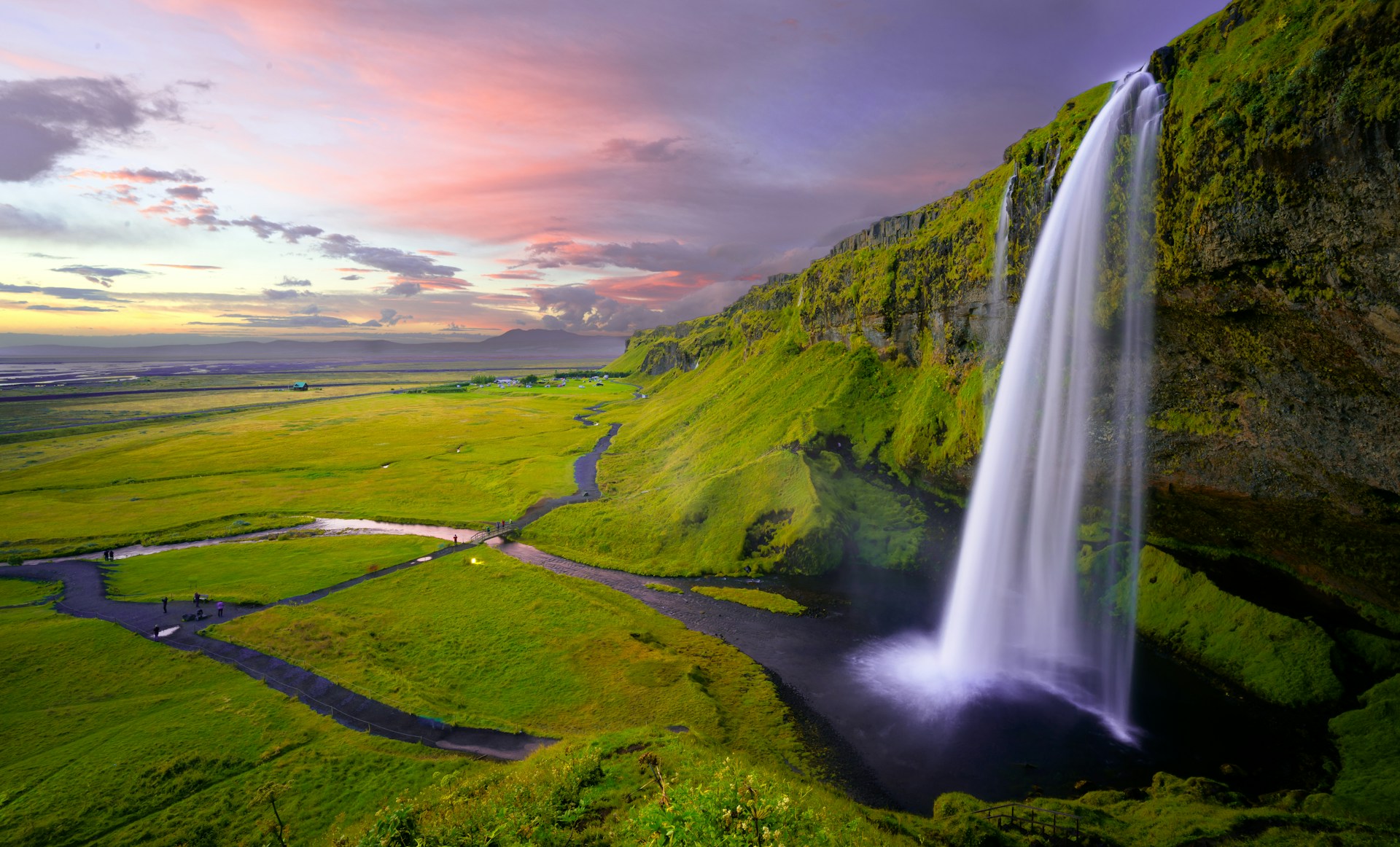
Morning: Seljalandsfoss & Skógafoss
Start early to beat the crowds at Seljalandsfoss, where you can walk behind the waterfall for epic photos. Then, drive to Skógafoss, where a double rainbow might just make your day!
Extra Tip: Bring a wide-angle lens to capture the waterfalls in all their glory.
Afternoon: Reynisfjara Beach & Dyrhólaey
Next, head to Reynisfjara Beach, famous for its black sands and basalt columns. Nearby, Dyrhólaey offers sweeping views of the coastline and puffins during the summer!
Pro Tip: The waves here are sneaky—keep a safe distance from the water.
Day 4: Glaciers and Icebergs – A Journey to Jökulsárlón Glacier Lagoon
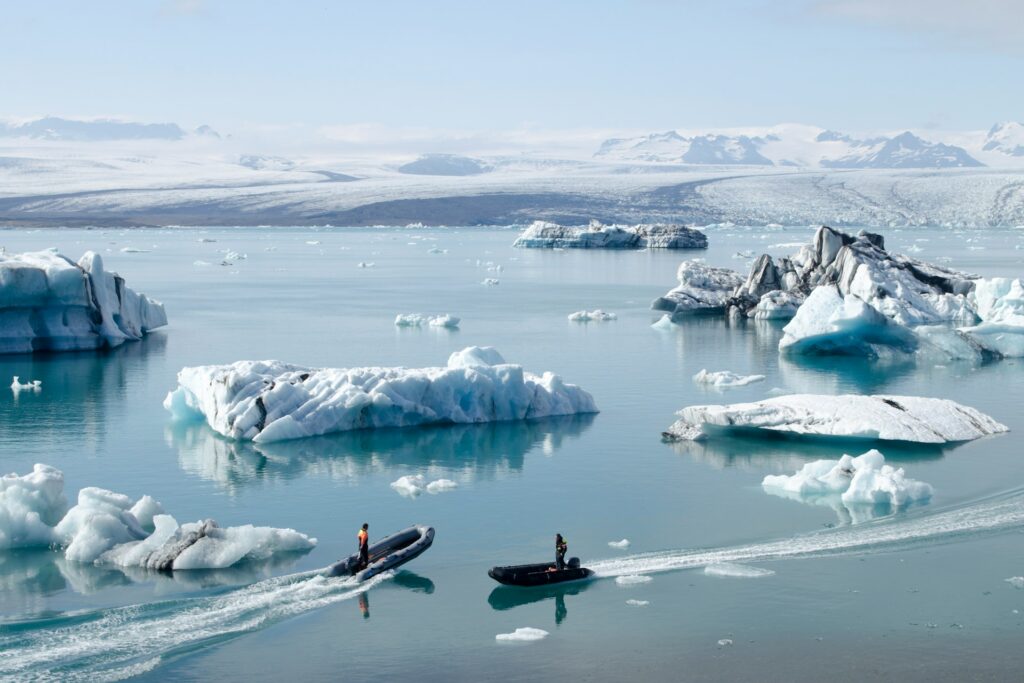
Morning: The Scenic Drive Along the South Coast
Wake up early for a scenic drive eastward to Jökulsárlón Glacier Lagoon. The drive itself is part of the adventure—watch the landscapes change dramatically from mossy lava fields to towering glaciers. Keep an eye out for Icelandic horses grazing along the way.
Stop at Fjaðrárgljúfur Canyon, a breathtaking gorge that looks straight out of a fantasy novel. A short hike here rewards you with incredible views, so don’t skip it!
Fun Fact: Fjaðrárgljúfur became famous after Justin Bieber featured it in one of his music videos.
Afternoon: Jökulsárlón Glacier Lagoon and Diamond Beach
Arrive at Jökulsárlón, where massive icebergs float serenely in a glacial lagoon. I highly recommend taking a zodiac boat tour to get up close to the icebergs. It’s surreal watching seals pop their heads out of the water as you glide past glowing blue ice.
Afterward, walk over to Diamond Beach, where ice chunks from the lagoon wash ashore on black sand, creating a mesmerizing contrast. You could easily spend hours photographing this natural wonder.
Pro Tip: Bring gloves! Handling those ice “diamonds” is chilly business.
Evening: Cozy Dinner and Stargazing
Drive back to Höfn, a quaint fishing town famous for its langoustine (Icelandic lobster). Treat yourself to a decadent dinner at Pakkhús Restaurant before calling it a night.
If you’re visiting in winter, this area is also a prime spot for Northern Lights hunting. Pull over at a dark, open area, and let the celestial magic unfold.
Day 5: The Enchanting Eastfjords

Morning: Fjords, Villages, and Wildlife
On Day 5, continue your adventure through Iceland’s picturesque Eastfjords. This less-touristy region feels like stepping into a postcard. Stop by Djúpivogur, a charming village known for its art installations and serene harbor.
Take your time navigating the winding roads, which offer incredible views of jagged mountains meeting the sea. You may even spot reindeer grazing in the wild.
Extra Tip: Fill up on gas before entering this area—stations are sparse!
Afternoon: Hengifoss Waterfall
Make your way to Hengifoss, one of Iceland’s tallest waterfalls. The hike to the falls takes about an hour and rewards you with stunning basalt column formations. Along the way, you’ll also pass Litlanesfoss, a smaller but equally beautiful waterfall.
Pro Tip: Pack a picnic and enjoy it by the river after your hike.
Evening: A Stay in Egilsstaðir
Spend the evening in Egilsstaðir, the largest town in the Eastfjords. It’s a great base to unwind, with cozy guesthouses and hearty local cuisine. Don’t miss a taste of reindeer meat, a regional delicacy.
Day 6: Snæfellsnes Peninsula – Iceland in Miniature
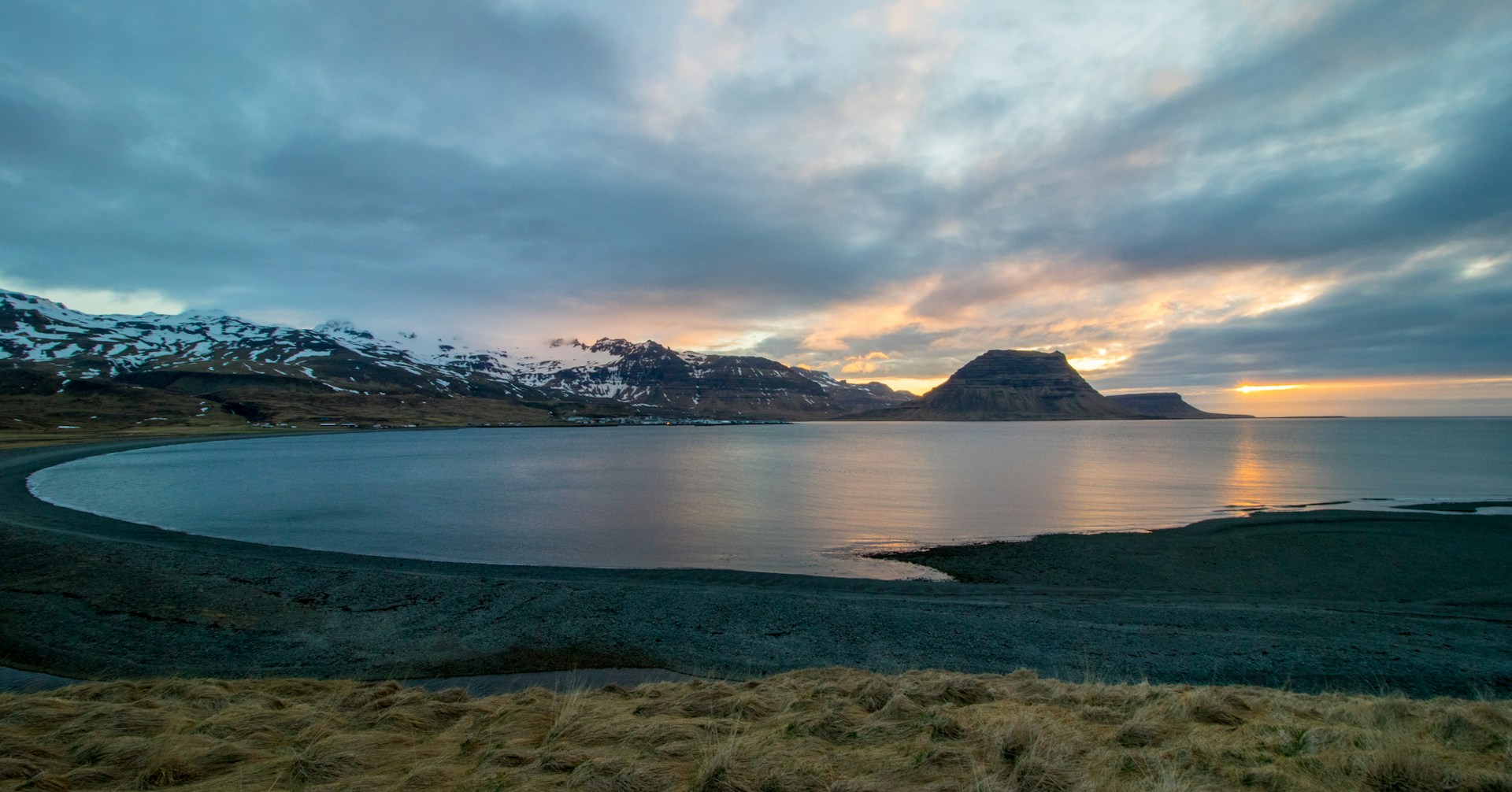
Morning: Journey to the Peninsula
Start early for a long drive to the Snæfellsnes Peninsula, often called “Iceland in Miniature” because it offers a bit of everything: mountains, lava fields, waterfalls, and beaches.
Stop by Kirkjufell, Iceland’s most photographed mountain. You’ll recognize it from “Game of Thrones,” and its symmetrical shape paired with the nearby waterfall makes for a picture-perfect scene.
Afternoon: Vatnshellir Lava Cave and Arnarstapi
Explore the underground wonders of Vatnshellir Lava Cave, a 200-meter-long lava tube that feels like descending into another world. Afterward, head to Arnarstapi, a quaint coastal village with dramatic sea cliffs and rock arches.
Highlight: Look for Gatklettur, a natural rock arch that’s a photographer’s dream.
Evening: Sunset by the Beach
End your day at Ytri-Tunga Beach, known for its seal colonies. Watching the sun set over the ocean while seals play in the surf is pure magic.
Day 7: Reykjavík and Relaxation
Morning: Return to the Capital
Head back to Reykjavík for your final day in Iceland. Stop at Borgarnes along the way, where you can visit the Settlement Center Museum to learn about Iceland’s early settlers.
Afternoon: Souvenir Shopping and Coffee Culture
Spend the afternoon wandering Reykjavík’s vibrant streets. Pick up souvenirs like Icelandic wool sweaters (lopapeysa) or lava rock jewelry from Laugavegur, the city’s main shopping street.
For coffee lovers, make a pit stop at Reykjavík Roasters, a local favorite for a perfectly brewed cup.
Bonus Tip: Don’t forget to grab a few packets of Icelandic salt or chocolate—they make great gifts!
Evening: A Grand Farewell
End your trip with an unforgettable dinner at Dill, Iceland’s first Michelin-starred restaurant. It’s a splurge, but the locally sourced tasting menu is a once-in-a-lifetime experience.
As you reflect on your journey through Iceland’s breathtaking landscapes, you’ll realize this is more than a trip—it’s a soul-stirring adventure.
Real Traveler Experiences: “I visited Iceland in February, and seeing the Northern Lights dance above Jökulsárlón was magical. It’s a bucket-list moment!” – Sarah, USA
Flexible Budgeting and Travel Tips
Planning a trip to Iceland can seem daunting due to its reputation for high costs, but with careful planning and savvy choices, you can experience the Land of Fire and Ice without breaking the bank. Here’s a comprehensive guide to help you navigate your expenses and make the most of your adventure.
Estimated Costs
- Accommodation: Depending on your preferences, accommodation costs can vary significantly. Budget travelers can find hostel dorms ranging from $30 to $60 per night. Mid-range options like guesthouses or three-star hotels typically cost between $100 and $200 per night. For those seeking luxury stays, expect to pay upwards of $300 per night.
- Meals: Dining out in Iceland can be pricey. A meal at an inexpensive restaurant may cost around $15 to $20, while a three-course meal at a mid-range restaurant can set you back $50 or more. To save money, consider cooking your own meals or opting for street food options.
- Transportation: Renting a car offers flexibility but comes with costs. Weekly car rentals can start at $500, depending on the vehicle type and season. Additionally, fuel prices are high; for example, driving the entire Ring Road can cost around $400 in gas. Alternatively, public buses and shared tours are available for those who prefer not to drive.
- Activities: Many of Iceland’s natural attractions, like waterfalls and national parks, are free to visit. However, guided tours, such as glacier hikes or whale watching, can range from $100 to $300 per person. Prioritize the activities that interest you most and balance them with free attractions to manage costs.
- Packing Essentials: Layers, waterproof boots, gloves, and a reusable water bottle (Icelandic tap water is heavenly!).
Money-Saving Tips
- Travel Off-Peak: Visiting during the shoulder seasons (spring and fall) can result in lower prices for flights and accommodations. Additionally, attractions are less crowded, allowing for a more intimate experience.
- Cook Your Own Meals: Groceries in Iceland are reasonably priced compared to dining out. Many accommodations offer kitchen facilities, enabling you to prepare your own meals. Stock up at budget-friendly supermarkets like Bónus or Krónan.
- Limit Alcohol Consumption: Alcohol is heavily taxed in Iceland, making it quite expensive. If you plan to drink, consider purchasing duty-free alcohol upon arrival or take advantage of happy hour deals in local bars.
- Utilize Public Transportation: While renting a car offers flexibility, public transportation is a cost-effective alternative. Iceland has a network of buses that connect major towns and attractions. For example, the Reykjavík City Card provides unlimited access to city buses and discounts on various attractions.
- Choose Affordable Accommodations: Consider staying in hostels, guesthouses, or even camping during the summer months. Camping is a popular and budget-friendly option, with campsites located near many attractions. Ensure you have the appropriate gear to stay warm and dry.
- Book in Advance: Planning and booking your accommodations, tours, and transportation ahead of time can secure better deals and availability, especially during peak tourist seasons.
What to Eat in Iceland
Embarking on a culinary journey through Iceland is an adventure in itself. The country’s cuisine is deeply rooted in its natural resources, offering a unique blend of flavors that reflect its rugged landscapes and rich history. Here are some must-try Icelandic dishes that will tantalize your taste buds:

1. Plokkfiskur: Creamy Fish Stew
Plokkfiskur is a traditional Icelandic dish that combines boiled cod or haddock with mashed potatoes, onions, and a creamy béchamel sauce. This hearty stew is often enjoyed with a slice of rye bread and butter, making it the ultimate comfort food, especially during the colder months.
2. Icelandic Hot Dogs (Pylsur)
Icelandic hot dogs, known as “pylsur,” are a beloved street food. Made primarily from lamb, these hot dogs are typically served with raw onions, crispy fried onions, ketchup, mustard, and a special remoulade sauce. A visit to Reykjavík’s famous Bæjarins Beztu Pylsur stand is a must for an authentic experience.
3. Skyr: Icelandic Yogurt
Skyr is a staple in Icelandic diets, often consumed at breakfast or as a snack. This thick, creamy dairy product resembles yogurt but is technically a cheese. It’s available in various flavors, from plain to berry-infused, and is typically enjoyed with a drizzle of honey or mixed with fresh fruit.
4. Harðfiskur: Dried Fish
Harðfiskur, or dried fish, is a traditional Icelandic snack. Typically made from cod, haddock, or wolffish, the fish is dried and sometimes enjoyed with butter. It’s a high-protein, low-fat snack that’s both nutritious and flavorful.
5. Icelandic Ice Cream
Despite the chilly climate, Icelanders have a profound love for ice cream. Local ice cream shops, known as “Ísbúð,” offer a variety of flavors and are popular hangout spots. Some parlors even stay open until 1 am, catering to late-night cravings. Don’t miss trying unique flavors like licorice or skyr ice cream.
Bonus Tip: Even in winter, Icelandic ice cream shops are bustling. The creamy texture and diverse flavors make it a delightful treat year-round.
6. Lamb Dishes
Icelandic lamb is renowned for its tenderness and unique flavor, attributed to the sheep’s diet of wild herbs and grasses. Traditional dishes include “hangikjöt” (smoked lamb) and “kjötsúpa” (lamb soup). Sampling these dishes offers a taste of Iceland’s pastoral heritage.
7. Rye Bread (Rúgbrauð)
Icelandic rye bread, known as “rúgbrauð,” is dense and slightly sweet. Traditionally baked by burying the dough in the ground near geothermal areas, the bread is steamed by the earth’s heat. It’s often served with butter, smoked salmon, or pickled herring.
8. Brennivín: Icelandic Schnapps
For those interested in beverages, Brennivín is Iceland’s signature distilled spirit. Often referred to as “Black Death,” this schnapps is made from fermented grain or potato mash and flavored with caraway seeds. It’s traditionally consumed during the midwinter festival of Þorrablót.
Fun Fact: Icelanders consume more ice cream per capita than any other nation, despite the cold climate.
Exploring Iceland’s culinary landscape offers a window into its culture and history. Whether you’re savoring a bowl of plokkfiskur or indulging in a late-night ice cream cone, each dish tells a story of the island’s rich traditions and natural bounty.
Where to Stay: Recommended Hotels and Areas
Planning your accommodations in Iceland can be as exciting as the adventures that await. Whether you’re a budget traveler, seeking mid-range comfort, or indulging in luxury, Iceland offers a variety of options to suit every preference. Here’s a breakdown to help you choose the perfect place to rest your head:
Budget Options
- KEX Hostel, Reykjavík: Located in the heart of Reykjavík, KEX Hostel is a vibrant and affordable choice for travelers. Housed in a former biscuit factory, it boasts a unique, industrial-chic design. The hostel features a lively bar, a cozy library, and even a vintage record shop. Its central location means you’re just a short walk from Reykjavík’s main attractions, including the Hallgrímskirkja church and the bustling Laugavegur shopping street. Guests can choose from dormitory-style rooms or private quarters, all offering a comfortable stay without breaking the bank.
- Hotel Cabin, Reykjavík: For those seeking a straightforward and budget-friendly option, Hotel Cabin provides clean and simple accommodations. While it may not offer the same flair as KEX Hostel, it compensates with its affordability and proximity to the city center. The hotel offers a variety of room types, including single, double, and family rooms, all equipped with essential amenities to ensure a comfortable stay. Its location near the waterfront provides easy access to Reykjavík’s attractions, making it a convenient base for exploring the city.
Mid-Range Options
- Hótel Skógafoss, Skógar: Situated near the iconic Skógafoss waterfall, this hotel offers cozy accommodations with stunning views of the falls. The rooms are tastefully decorated, combining modern amenities with traditional Icelandic design elements. Guests can enjoy a complimentary breakfast buffet each morning, featuring a selection of local and international dishes. The hotel’s restaurant serves a variety of Icelandic specialties, and the on-site bar is perfect for unwinding after a day of exploration. Its location makes it an ideal base for exploring the nearby attractions, including the Skógar Folk Museum and the Sólheimajökull glacier.
- Hotel Aldan, Seyðisfjörður: Located in the picturesque town of Seyðisfjörður, Hotel Aldan offers a blend of modern comfort and historic charm. The hotel is housed in a beautifully restored wooden building, reflecting the town’s rich cultural heritage. Each room is uniquely decorated, featuring antique furnishings and contemporary amenities. Guests can dine at the hotel’s restaurant, which specializes in local seafood dishes, or relax in the cozy lounge area. The town itself is known for its colorful houses, art galleries, and stunning fjord views, making it a delightful destination for travelers.
Luxury Options
- Ion Adventure Hotel, Nesjavellir: For a touch of luxury amidst Iceland’s natural beauty, the Ion Adventure Hotel is a top choice. Located near the Þingvellir National Park, the hotel offers sleek, modern rooms with floor-to-ceiling windows that provide panoramic views of the surrounding lava fields and mountains. The on-site Silfra Restaurant serves gourmet Icelandic cuisine, and the Northern Lights Bar is the perfect spot to relax with a cocktail while keeping an eye out for the aurora borealis. The hotel’s spa offers a range of treatments, and the outdoor hot tubs provide a unique experience, especially under the Northern Lights. Its proximity to the Golden Circle makes it an ideal base for exploring the region’s natural wonders.
- The Retreat at Blue Lagoon, Grindavík: For an unparalleled luxury experience, The Retreat at Blue Lagoon offers exclusive suites with direct access to the rejuvenating geothermal waters. The suites are elegantly designed, featuring private terraces and panoramic views of the lagoon and surrounding lava fields. Guests can indulge in the spa’s signature treatments, dine at the Moss Restaurant, which offers a fine dining experience with locally sourced ingredients, and enjoy the serene atmosphere of the Retreat Lagoon. The hotel’s location near the Blue Lagoon geothermal spa allows guests to experience the healing properties of the mineral-rich waters in a tranquil setting.
This or That?
- Reykjavík for Nightlife vs. Snæfellsnes for Solitude: If you’re seeking vibrant nightlife, Reykjavík is the place to be. The city boasts a plethora of bars, clubs, and live music venues that cater to all tastes. From trendy cocktail bars to traditional pubs, there’s something for everyone. On the other hand, if you prefer solitude and natural beauty, the Snæfellsnes Peninsula offers a tranquil retreat. Known as “Iceland in Miniature,” it features diverse landscapes, including volcanic craters, lava fields, and charming fishing villages. It’s an ideal destination for hiking, photography, and immersing yourself in Iceland’s serene countryside.
Essential Apps for Traveling in Iceland
Embarking on an Icelandic adventure? Equip yourself with these essential apps to enhance your journey:
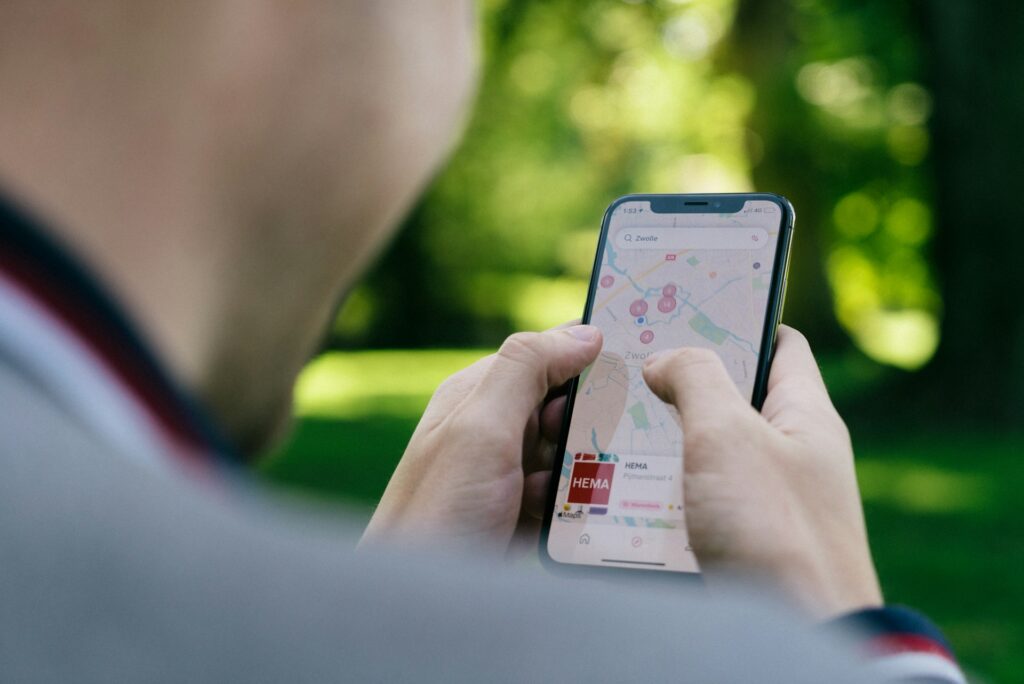
- Google Maps: Navigate Iceland’s diverse landscapes with ease. Google Maps offers reliable directions, real-time traffic updates, and offline maps, ensuring you never lose your way, even in remote areas. Before your trip, download the entire map of Iceland to your device for offline use.
- Aurora Forecast: Eager to witness the mesmerizing Northern Lights? Aurora Forecast provides real-time updates on aurora activity, helping you plan the best times and locations to catch this natural spectacle. The app offers detailed forecasts, including KP index, cloud cover, and aurora strength, ensuring you don’t miss out on this unforgettable experience.
- Vedur: Stay informed about Iceland’s unpredictable weather with Vedur, the official weather app. Access up-to-date forecasts, weather warnings, and road conditions to plan your activities safely. The app provides detailed information on temperature, precipitation, wind speed, and more, helping you prepare for the ever-changing Icelandic weather.
- XE Currency Converter: Keep track of your expenses with XE Currency Converter, offering real-time exchange rates and easy currency conversions. The app allows you to monitor multiple currencies simultaneously and provides historical charts to track exchange rate trends. It’s an invaluable tool for budgeting and ensuring you get the best value for your money.
- SafeTravel: Prioritize safety with the SafeTravel app, providing information on road conditions, weather warnings, and emergency services. The app allows you to register your travel plans, enabling authorities to assist you more effectively in case of an emergency. It also offers tips on safe hiking practices and guidelines for various outdoor activities.
- Hopp: Explore urban areas with Hopp, offering electric scooter rentals, car sharing, and ride-sharing services. The app provides a convenient way to navigate cities like Reykjavík, offering flexible transportation options to suit your needs. With Hopp, you can easily locate and rent scooters or cars, or book a ride-share, all through a user-friendly interface.
- AllTrails: For hiking enthusiasts, AllTrails offers detailed information on trails, including maps, reviews, and difficulty levels. The app helps you discover new hiking routes, track your progress, and share experiences with a community of outdoor enthusiasts. It also provides information on trail conditions, elevation gain, and estimated completion times, ensuring a safe and enjoyable hiking experience.
- Guide to Iceland: Plan your itinerary with Guide to Iceland, offering comprehensive information on tours, accommodations, and attractions. The app provides detailed descriptions, user reviews, and booking options for various services, helping you tailor your trip to your preferences. It also offers travel tips, itineraries, and guides to ensure you make the most of your Icelandic adventure.
Essential Safety Tips for Your Iceland Itinerary
Iceland’s breathtaking landscapes and unique natural wonders make it a must-visit destination. To ensure a safe and enjoyable trip, consider the following essential safety tips:
- Check the Weather: Iceland’s weather is notoriously unpredictable and can change rapidly. Before embarking on any journey, especially in remote areas, consult the Icelandic Met Office for the latest weather forecasts. Additionally, the Safetravel app provides real-time updates on weather conditions and road closures, helping you plan your activities safely.
- Respect Nature: Iceland’s delicate ecosystems are vulnerable to human activity. Always stay on marked paths and avoid disturbing wildlife. For instance, when visiting geothermal areas, adhere to designated trails to prevent accidents and preserve the environment.
- Stay Warm: Even during summer, temperatures can be chilly, especially in the evenings. Dress in layers to accommodate fluctuating weather conditions. Wearing waterproof and windproof outer layers is advisable to protect against sudden weather changes.
- Stay Hydrated and Nourished: While Iceland’s tap water is pure and safe to drink, it’s essential to stay hydrated during your adventures. Carry a reusable water bottle and refill it as needed. For sustenance, Icelandic gas stations offer a variety of fresh and tasty snacks, including sandwiches, wraps, salads, and even hot meals like fish and chips. These stations often double as convenient snack stops, providing a quick and satisfying meal on the go.
- Stay Connected: While Iceland is generally safe, it’s wise to keep your phone charged and accessible. The Safetravel app allows you to send your GPS location to emergency services, ensuring they can locate you if needed. Additionally, inform someone about your travel plans and expected return times, especially if venturing into remote areas.
- Drive Safely: If you’re renting a vehicle, familiarize yourself with Icelandic road signs and driving laws. Be cautious of gravel roads, sudden weather changes, and wildlife crossings. Always wear your seatbelt and avoid using mobile phones while driving. For more information on navigating gas stations and fueling up in Iceland, you can watch the following video:
- Emergency Services: In case of emergencies, dial 112 for immediate assistance. This number connects you to police, fire, and medical services throughout Iceland. It’s advisable to have this number saved in your phone for quick access.
Final Thoughts
Iceland’s captivating landscapes and rich culture leave an indelible mark on every traveler. To ensure a seamless and memorable journey, consider the following recommendations:
- Book Flights Early and Bundle with Accommodation for Savings: Securing your flights well in advance can lead to significant savings. Additionally, many travel agencies offer package deals that combine flights and accommodations, providing both convenience and cost-effectiveness.
- Get Travel Insurance That Covers Adventure Activities: If you plan to engage in activities like hiking, glacier tours, or other adventure sports, ensure your travel insurance includes coverage for these pursuits. Some insurance providers offer plans specifically tailored for adventure travelers. For instance, World Nomads provides coverage for over 150 adventure sports and activities, including hiking, zip lining, and scuba diving.
- Rent a 4×4 if You Plan to Explore the Highlands: The Icelandic Highlands feature rugged terrains and unpaved roads. Renting a 4×4 vehicle is advisable for navigating these areas safely. Ensure you are familiar with the vehicle’s capabilities and local driving conditions before setting out.
- Always Carry a Reusable Water Bottle: Iceland’s tap water is renowned for its purity and taste. Carrying a reusable water bottle allows you to stay hydrated while minimizing plastic waste. Many public places and gas stations offer free water refill stations.
FAQs for Traveling Iceland
Q: Is the Ring Road safe to drive?
A: Yes, but always check road conditions and weather updates, especially in winter.
Q: Can I drink tap water in Iceland?
A: Absolutely! Icelandic tap water is some of the purest in the world.
Q: Are credit cards accepted everywhere?
A: Pretty much everywhere! Even remote gas stations and small shops accept cards.
Q: Can I drive in Iceland in winter?
A: Yes, but ensure your rental car has snow tires, and check weather updates frequently.
Q: Is Iceland expensive?
A: It’s not cheap, but careful planning and budget-friendly options make it manageable.
Q: Do I need a guide for Northern Lights?
A: Not necessarily! Apps like Aurora Forecast help, but guided tours increase your chances.
Also Read This:
- 14 Days Italy and Switzerland Itinerary Guide for Unforgettable Adventure
- One Day in Edinburgh | A Perfect Day Itinerary
- 7 Day New England Road Trip Itinerary | Discover the Best of the Northeast USA
- The Ultimate Ireland Itinerary 7 Days Road Trip Through the Emerald Isle
- 4 Day Barcelona Itinerary: Immerse Yourself in Culture and History
- 3 Day Rome Itinerary: Experience, Explore, and Embrace the Eternal City
- Costa Rica Itinerary 10 Days of Adventure and Relaxation in Paradise
- Best Time to Visit Rome: Unlocking the Eternal City’s Charms
- 27 Things to Do in Scotland: A Traveler’s Ultimate Guide
- Your Perfect Greece Itinerary 10 Days is Here | Explore Magic in Greece


